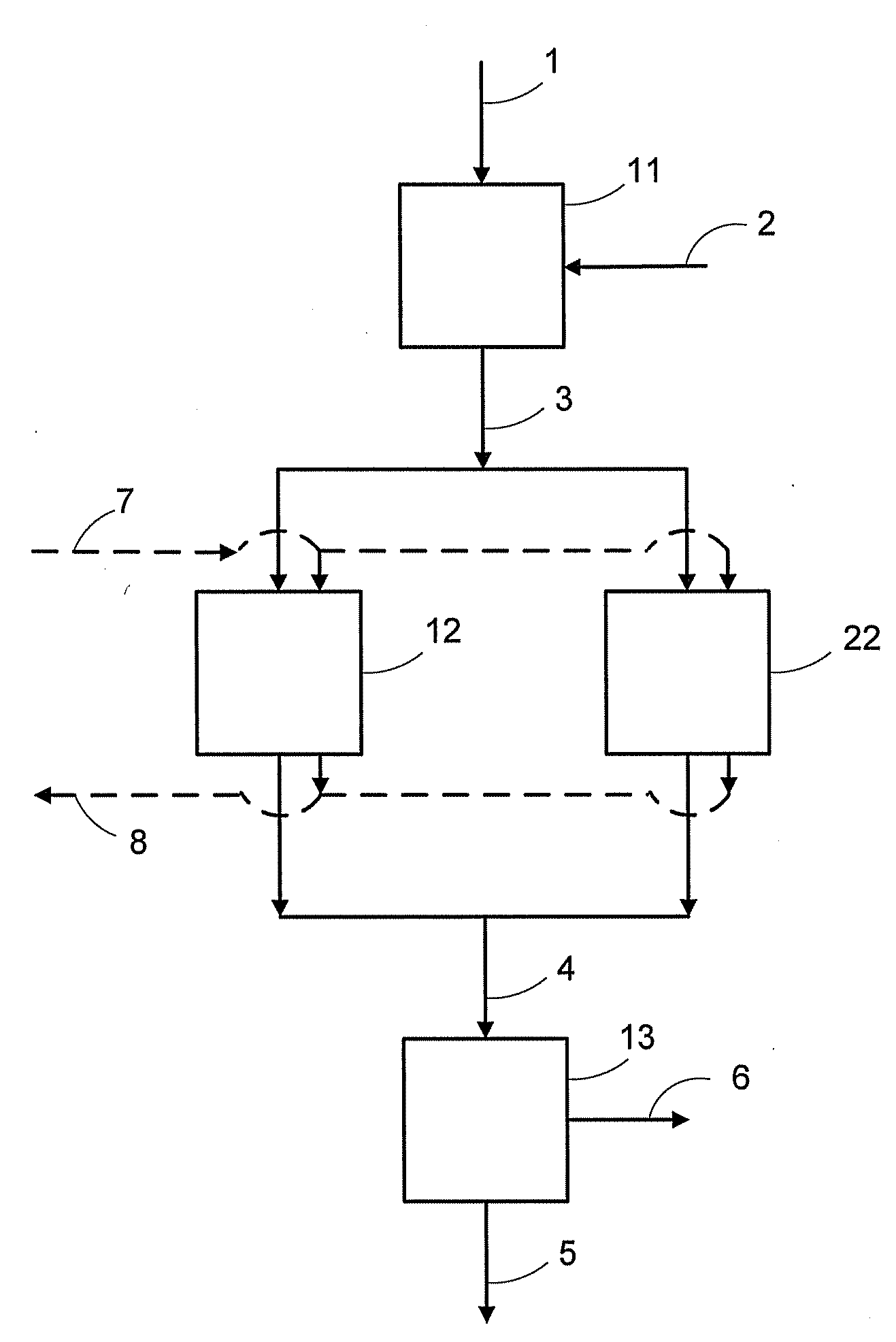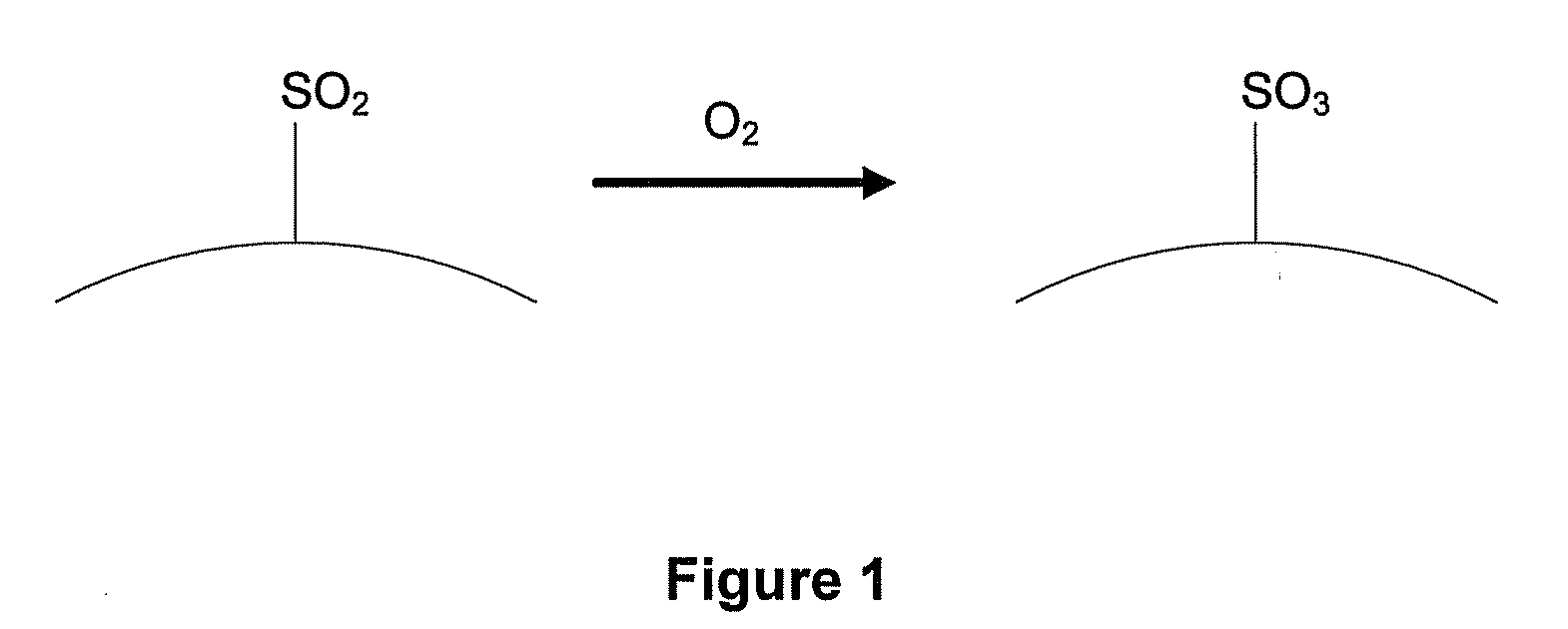Process and catalyst for desulfurization of hydrocarbonaceous oil stream
a technology of hydrocarbonaceous oil and catalyst, which is applied in the direction of physical/chemical process catalyst, organic compound/hydride/coordination complex catalyst, separation process, etc., can solve the problems of high hydrogen consumption, low flow rate, and high hydrogen pressure, and achieve specifications that are difficult to achieve with present methods, and sulfur compounds such as sterically hindered compounds, are more difficult to remove than others
- Summary
- Abstract
- Description
- Claims
- Application Information
AI Technical Summary
Benefits of technology
Problems solved by technology
Method used
Image
Examples
example
[0079]An activated carbon fiber (hereinafter ACF or “the fiber”), prepared from polyacrylonitrile (PAN) and having a surface area of approximately 1040 m2 / g, was pretreated by heating the fiber to approximately 1000° C. for approximately 12 hours under a flowing argon stream. The fiber was cooled to room temperature under an argon flow.
[0080]Approximately 15.2 g of the treated ACF were packed into a 100 mL tubular reactor. The ACF was again pretreated by heating to approximately 200° C. for approximately 2 hours under argon flow, and was cooled to room temperature under an argon flow. The fiber was contacted with gas which includes approximately 1 vol. % of SO2 and approximately 10 vol. % O2, which was diluted with helium to achieve a concentration of approximately 0.98 vol. % SO2. Upon completion of the loading, the ACF was kept under an argon blanket until reaction.
[0081]A hydrotreated straight run gas oil (SRGO) having a sulfur content of approximately 340 ppm sulfur was introduc...
PUM
| Property | Measurement | Unit |
|---|---|---|
| temperature | aaaaa | aaaaa |
| temperature | aaaaa | aaaaa |
| temperature | aaaaa | aaaaa |
Abstract
Description
Claims
Application Information
 Login to View More
Login to View More - R&D
- Intellectual Property
- Life Sciences
- Materials
- Tech Scout
- Unparalleled Data Quality
- Higher Quality Content
- 60% Fewer Hallucinations
Browse by: Latest US Patents, China's latest patents, Technical Efficacy Thesaurus, Application Domain, Technology Topic, Popular Technical Reports.
© 2025 PatSnap. All rights reserved.Legal|Privacy policy|Modern Slavery Act Transparency Statement|Sitemap|About US| Contact US: help@patsnap.com



